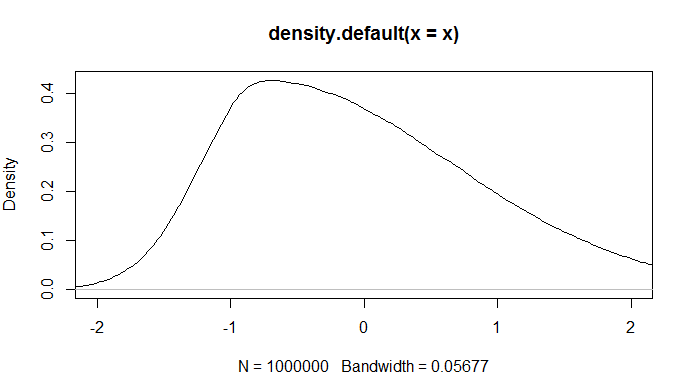I am using the sgt package in R to recreate the plot from Hansen's paper ( available here http://www.ssc.wisc.edu/~bhansen/papers/ier_94.pdf on page 8) using random draws from the skew-t distribution.
I begin with $\eta=30$ using the following code:
x = rsgt(1000000, mu = 0, sigma = 1, lambda = 0.5, p = 2, q=30, mean.cent=TRUE, var.adj=TRUE)
t=density(x)
plot(t, xlim=c(-2, 2))
And I obtain a plot that is analogycal to the one given in the paper. However, using $\eta = 3$ or $\eta = 2.1$ (replace q with one of those values) results in much different plots, which look weird. Do you have any suggestions to how to solve this matter?
Edit: I include the plots I want to obtain and the ones I can obtain.




